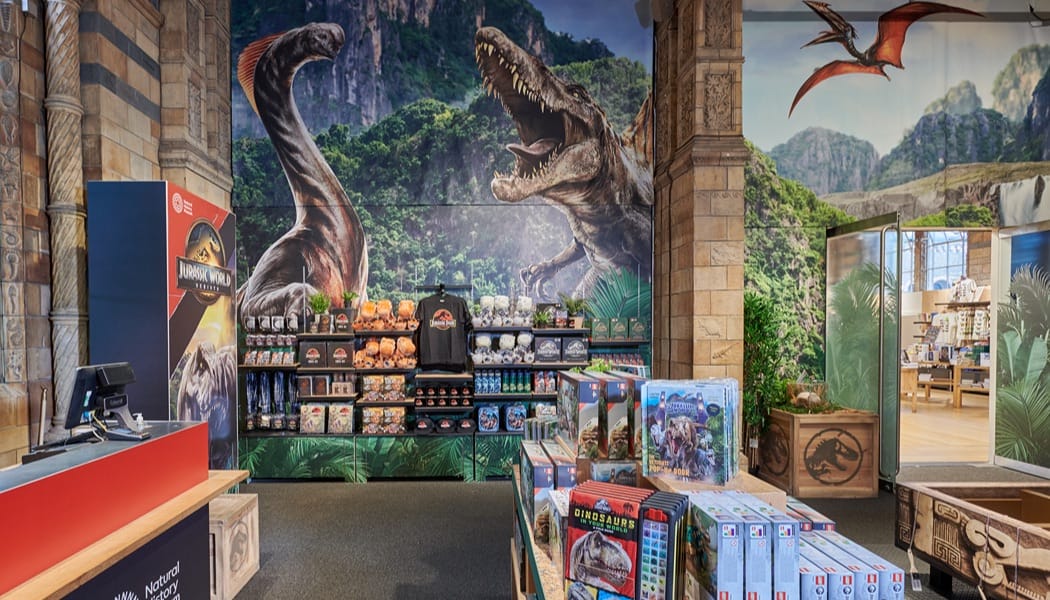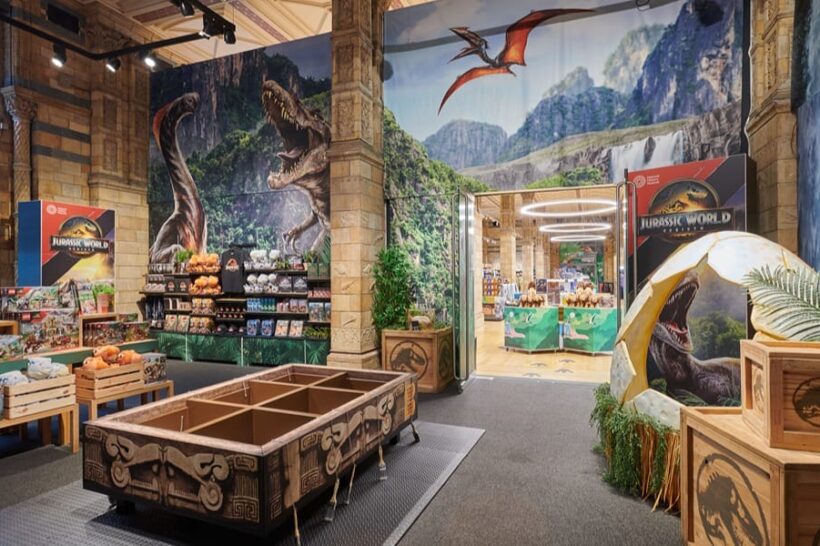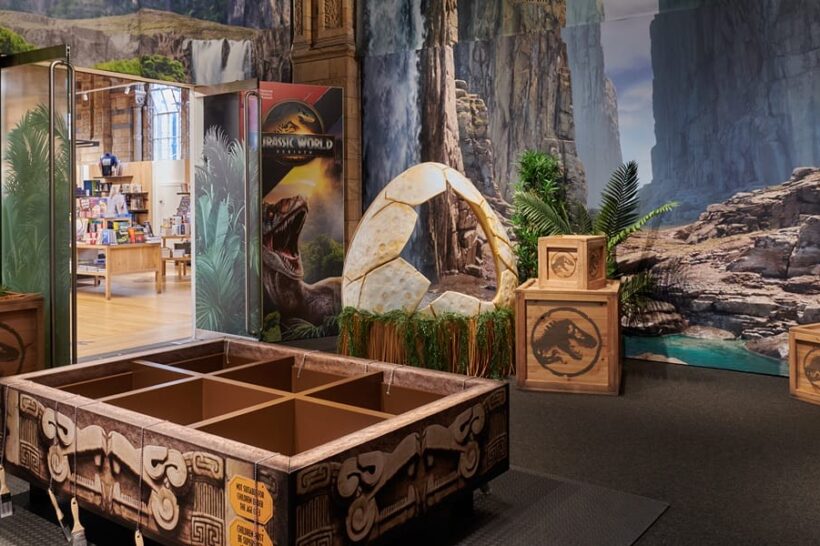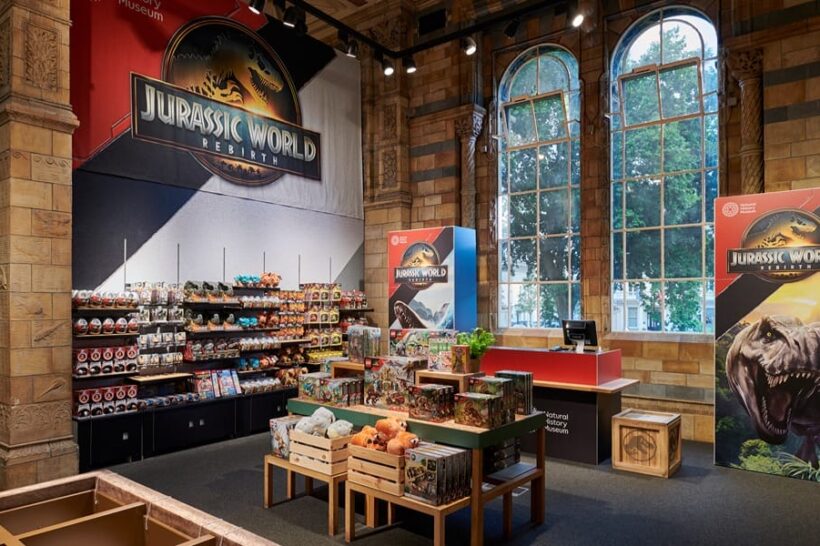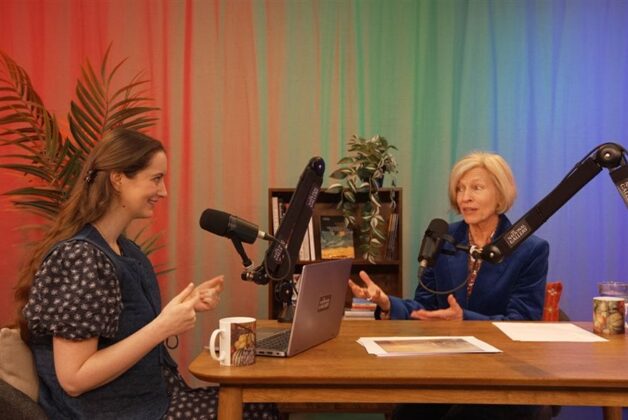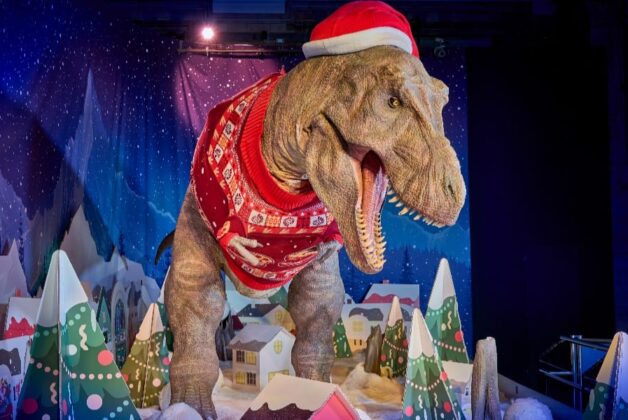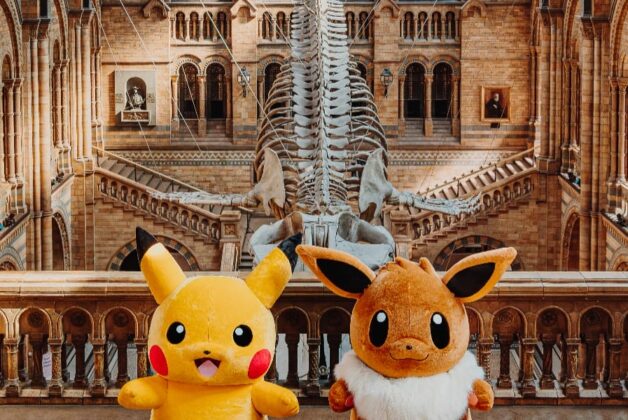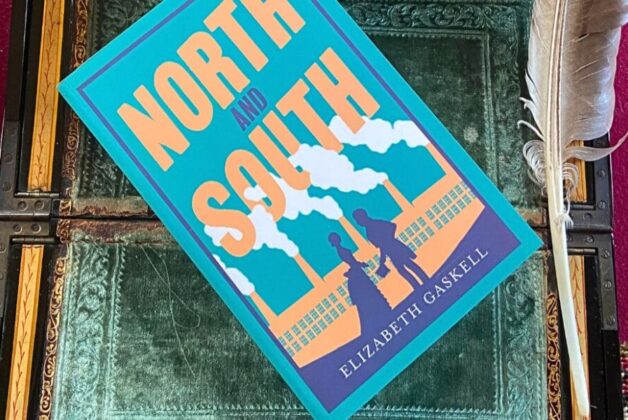Images: Jurassic World Rebirth x Natural History Museum © Trustees of the Natural History Museum
Temporary display features Titanosaurus figure, fossil dig sandpit and giant dinosaur egg, operating until September with profits supporting museum’s charitable mission.
A temporary makeover of a Natural History Museum shop begins today, following a partnership with Universal Studios theme.
To coincide with the newly released ‘Jurassic World Rebirth’ movie, Universal Products & Experiences (UP&E) and the Natural History Museum have collaborated on a pop-up shop at the Museum’s main retail space.
A Titanosaurus figure has been installed among newly added foliage to mimic the deserted island in which the film takes place, and a new sandpit table has been installed to allow young visitors to dig for fossils. Also installed is a giant dinosaur egg and a figure of a Quetzalcoatlus.
The shop is to sell Jurassic World-inspired toys, games, books, accessories and official Jurassic World apparel.
Claire Bevan, head of retail and customer contact at the Natural History Museum, said: “Fictional franchises such as Jurassic World can spark a real love and wonder for the natural world and provide a brilliant gateway for curious minds to engage with our vital work and science research.”
“At the Museum, we’re committed to creating advocates for the planet, and of course we’re famous across the world for dinosaurs.
The space will operate until 7 September 2025. All profits from purchases made in the shop and online store support the Museum’s charitable mission, it said.
Reflecting on the influence of the franchise, Prof. Susannah Maidment, a senior researcher at the museum said: “I was 12 when the original Jurassic Park movie came out.
“I already knew I wanted to be a palaeontologist, but Jurassic Park made my interest in dinosaurs socially acceptable, even as a teenage girl! Jurassic Park had a huge influence on our discipline, and I don’t think there would be as many dinosaur palaeontologists right now if it wasn’t for the film.”
Prof. Paul Barrett, a merit researcher, at the museum added: “I actually got my first job in palaeontology thanks to Jurassic Park, because I ended up being the research assistant for the then dinosaur curator at the Natural History Museum, Dr Angela Milner, because she had so many media inquiries that summer, she needed a temporary assistant to help her out.”

